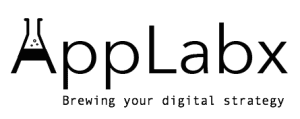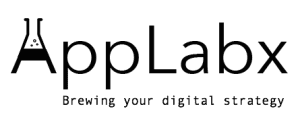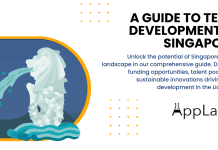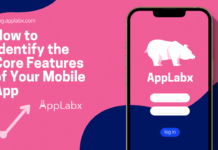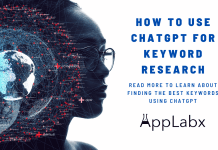Key Takeaways
- Accurately measuring the ROI of AI agents helps businesses justify investments and align AI initiatives with strategic goals.
- Key metrics like cost savings, revenue growth, and customer satisfaction provide a comprehensive view of AI value.
- Overcoming data and attribution challenges is essential for reliable ROI assessment and maximizing autonomous system benefits.
In today’s fast-evolving digital landscape, businesses across industries are increasingly turning to artificial intelligence (AI) agents and autonomous systems to streamline operations, enhance customer experiences, and drive innovation. From intelligent chatbots and virtual assistants to robotic process automation and autonomous decision-making tools, AI agents are transforming the way organizations operate. However, despite their growing adoption, a critical question remains at the forefront of executive discussions: what is the actual return on investment (ROI) from deploying these autonomous systems?

Understanding and quantifying the ROI of AI agents is essential for businesses aiming to make data-driven decisions about technology investments. Unlike traditional software or hardware expenditures, AI solutions often involve complex implementations with outcomes that extend beyond direct cost savings to include intangible benefits such as improved customer satisfaction, increased employee productivity, and enhanced scalability. Without a clear framework to measure these impacts, many companies struggle to justify AI projects or optimize their ongoing performance.
This blog aims to demystify the process of calculating the ROI of AI agents by providing a comprehensive guide tailored to business leaders, technology managers, and decision-makers. We will explore the fundamental concepts behind AI agents, identify the key metrics that matter for evaluating their financial and operational value, and present practical methods to quantify their contribution to your business success. Additionally, real-world case studies will illustrate how leading companies have realized measurable gains from autonomous systems, highlighting the tangible benefits achievable through strategic AI adoption.
By diving deep into the financial and strategic dimensions of AI agent deployment, this blog will empower your organization to assess investments more confidently, optimize AI-driven initiatives, and ultimately maximize the value derived from autonomous technologies. Whether you are just beginning to explore AI solutions or looking to enhance your existing AI infrastructure, understanding the ROI of AI agents is crucial for aligning technological innovation with business growth and sustainability.
But, before we venture further, we like to share who we are and what we do.
About AppLabx
From developing a solid marketing plan to creating compelling content, optimizing for search engines, leveraging social media, and utilizing paid advertising, AppLabx offers a comprehensive suite of digital marketing services designed to drive growth and profitability for your business.
AppLabx is well known for helping companies and startups create world-class AI agents.
At AppLabx, we understand that no two businesses are alike. That’s why we take a personalized approach to every project, working closely with our clients to understand their unique needs and goals, and developing customized strategies to help them achieve success.
If you need a digital consultation, then send in an inquiry here.
The ROI of AI Agents: Quantifying the Value of Autonomous Systems for Your Business
- Understanding AI Agents and Autonomous Systems
- Why ROI Matters in AI Agent Deployment
- Key Metrics to Measure the ROI of AI Agents
- Methods to Quantify ROI of Autonomous Systems
- Challenges in Measuring AI ROI and How to Overcome Them
- Best Practices for Maximizing ROI from AI Agents
1. Understanding AI Agents and Autonomous Systems
To fully grasp the ROI of AI agents, it is essential to understand what AI agents and autonomous systems are, how they function, and the various types businesses can leverage. This foundational knowledge helps clarify why these technologies deliver significant value across different operational areas.
What Are AI Agents?
- Definition: AI agents are software entities designed to perform tasks autonomously by perceiving their environment, processing information, and taking actions to achieve specific goals without continuous human intervention.
- Core Characteristics:
- Autonomy: Operate independently based on pre-defined rules or learned behaviors.
- Reactivity: Respond dynamically to changes in their environment.
- Proactiveness: Initiate actions to achieve objectives.
- Social Ability: Communicate with users or other agents if needed.
- Common Examples:
- Chatbots: Handle customer inquiries automatically in e-commerce or support settings.
- Virtual Assistants: Assist with scheduling, reminders, or workflow management (e.g., Amazon Alexa, Google Assistant).
- Robotic Process Automation (RPA): Automates repetitive administrative tasks such as data entry or invoice processing.
- Recommendation Engines: Suggest products or content based on user behavior (e.g., Netflix, Amazon).
What Are Autonomous Systems?
- Definition: Autonomous systems refer to AI-powered technologies capable of executing complex tasks without human intervention, often involving real-time decision-making and adaptation.
- Key Attributes:
- Sensing: Collect data from internal and external sources.
- Perception: Interpret sensory data to understand context.
- Decision-Making: Analyze information to choose appropriate actions.
- Action: Execute tasks or adjust behavior based on decisions.
- Examples in Business Contexts:
- Self-Driving Vehicles: Autonomous cars and drones navigating environments.
- Industrial Automation Robots: Managing manufacturing lines with minimal supervision.
- AI-Driven Cybersecurity Systems: Detecting and responding to threats automatically.
- Supply Chain Optimization Tools: Autonomous inventory management and logistics scheduling.
Types of AI Agents and Autonomous Systems: A Comparative Matrix
| Type | Description | Use Cases | Level of Autonomy | Industry Examples |
|---|---|---|---|---|
| Reactive Agents | Simple agents responding to specific inputs | Chatbots, automated FAQ systems | Low | Customer Service, Retail |
| Deliberative Agents | Plan actions based on internal models | Virtual assistants, schedulers | Medium | Corporate, Healthcare |
| Hybrid Agents | Combine reactive and deliberative features | Autonomous drones, RPA | High | Manufacturing, Logistics |
| Autonomous Systems | Complex, multi-component systems | Self-driving cars, robotic arms | Very High | Automotive, Industrial, Defense |
How AI Agents and Autonomous Systems Work: A Step-by-Step Process
- Data Collection: Gathering inputs through sensors, user interactions, or integrated databases.
- Data Processing: Using machine learning algorithms, natural language processing, or rule-based logic to interpret data.
- Decision Making: Employing predictive analytics, probabilistic models, or AI reasoning to select optimal actions.
- Execution: Performing tasks such as responding to customers, manipulating physical objects, or updating systems.
- Learning and Adaptation: Continuously improving performance through feedback loops and data analysis.
Why Understanding AI Agents Matters for Businesses
- Aligning Technology with Business Goals:
- Knowing the capabilities helps in selecting the right AI agent tailored to specific challenges.
- Optimizing Integration:
- Understanding agent functions ensures seamless incorporation into existing workflows.
- Accurate ROI Estimation:
- Knowing operational scopes and limitations aids in setting realistic performance metrics.
Real-World Example: AI Agents in Customer Service
- Chatbots for E-commerce:
- Handle up to 80% of common customer inquiries without human assistance.
- Provide 24/7 support, reducing wait times and operational costs.
- Example: A leading online retailer deployed a chatbot that improved first-contact resolution by 30% while cutting support costs by 20%.
- Virtual Assistants in Corporate Settings:
- Automate meeting scheduling, email management, and report generation.
- Example: A multinational firm uses AI virtual assistants that saved employees an average of 4 hours weekly, boosting productivity.
2. Why ROI Matters in AI Agent Deployment
Understanding why ROI (Return on Investment) is critical when deploying AI agents helps businesses justify expenditures, set realistic expectations, and measure success effectively. This section explores the strategic importance of ROI in AI initiatives and highlights practical considerations for maximizing value.
The Strategic Importance of ROI in AI Agent Deployment
- Investment Justification
- AI technologies often require significant upfront costs, including software licensing, hardware infrastructure, and skilled personnel.
- ROI analysis provides a quantifiable measure that supports business cases for AI adoption, enabling executives to justify budget allocation confidently.
- Resource Optimization
- ROI metrics help prioritize AI projects with the highest potential impact, ensuring efficient use of capital and operational resources.
- Avoids investing in underperforming AI solutions by enabling early identification of low-return deployments.
- Aligning AI with Business Objectives
- Setting ROI goals ensures AI deployments focus on measurable business outcomes such as cost reduction, revenue growth, or customer satisfaction.
- Helps bridge the gap between technical teams and business stakeholders by focusing on tangible results.
- Risk Mitigation
- Understanding potential ROI helps in assessing the risks and rewards of adopting new AI technologies.
- Facilitates better decision-making by balancing innovation with financial prudence.
Common Challenges Without ROI Focus in AI Deployment
- Unclear Performance Benchmarks
- Deploying AI without defined ROI can result in vague expectations, making it difficult to assess success or failure.
- Overlooking Hidden Costs
- Neglecting total cost of ownership including maintenance, training, and integration may distort actual investment value.
- Missed Opportunities for Improvement
- Without ROI measurement, organizations lose insights into how AI systems can be optimized for greater impact.
Key Business Drivers for ROI Measurement in AI Agent Use
| Business Driver | Impact on ROI Analysis | Example |
|---|---|---|
| Cost Reduction | Quantifying savings from automation and process efficiency | RPA bots reducing manual invoice processing time by 60% |
| Revenue Growth | Measuring incremental sales or upsell influenced by AI | AI-powered recommendations increasing average order value by 15% |
| Customer Experience Enhancement | Tracking improvements in satisfaction and retention | Chatbots reducing response time, leading to 20% higher customer retention |
| Productivity Gains | Calculating time saved and output improvement | Virtual assistants saving employee hours on administrative tasks |
| Scalability & Flexibility | Evaluating ability to handle increased demand without added costs | AI system managing 3x more transactions without extra headcount |
How ROI Drives AI Adoption Success: Examples and Use Cases
- Example 1: Customer Support Chatbots
- A telecommunications company deployed AI chatbots to handle routine inquiries, leading to a 40% reduction in live agent workload and a 25% decrease in average handling time.
- ROI was calculated by comparing the cost of chatbot development and maintenance against labor cost savings and improved customer retention.
- Example 2: Autonomous Supply Chain Systems
- A global retailer implemented AI-driven demand forecasting and inventory management, reducing stockouts by 30% and excess inventory by 20%.
- ROI was assessed by measuring cost savings from reduced warehousing needs and increased sales due to better product availability.
ROI as a Framework for Continuous Improvement
- Setting Baselines and KPIs
- Define clear performance indicators linked to financial and operational goals before AI deployment.
- Monitoring and Analytics
- Use dashboards and reporting tools to track real-time AI agent performance and its contribution to ROI.
- Iterative Optimization
- Analyze ROI data to refine AI models, workflows, and integration points for ongoing value enhancement.
Visual: ROI Impact Matrix for AI Agent Deployment
| ROI Factor | Short-Term Impact | Long-Term Impact | Measurement Complexity |
|---|---|---|---|
| Cost Savings | High | Moderate | Low |
| Revenue Increase | Moderate | High | Medium |
| Customer Satisfaction | Moderate | High | High |
| Productivity Gains | High | Moderate | Medium |
| Scalability | Low | High | High |
Conclusion: Why ROI Matters in AI Agent Deployment
- ROI is a fundamental metric that drives informed investment decisions in AI agents.
- It aligns AI initiatives with strategic business goals, ensuring technology delivers measurable value.
- A structured approach to ROI measurement enables businesses to maximize benefits, minimize risks, and continuously improve AI performance.
- Without a clear focus on ROI, organizations risk wasting resources and missing the full potential of AI technology.
3. Key Metrics to Measure the ROI of AI Agents
Accurately measuring the ROI of AI agents requires identifying and tracking specific metrics that reflect both the financial and operational impacts of these autonomous systems. This section breaks down the most critical key performance indicators (KPIs) and explains how they contribute to quantifying AI agent value.
Financial Metrics
- Cost Savings
- Measures reduction in expenses due to automation and process improvements.
- Examples include labor cost reduction, decreased error rates, and minimized operational overhead.
- Example: An insurance company using AI-driven claim processing reduced manual handling costs by 35%, directly impacting ROI.
- Revenue Growth
- Tracks additional income generated through AI-enhanced sales, upselling, or cross-selling.
- AI recommendation engines and targeted marketing campaigns often contribute to increased revenue.
- Example: An e-commerce platform saw a 20% rise in average order value after implementing AI-powered personalized product suggestions.
- Return on Ad Spend (ROAS)
- For AI agents involved in marketing automation, ROAS measures the revenue generated per advertising dollar spent.
- AI can optimize ad targeting and bidding strategies to maximize ROAS.
Operational Metrics
- Process Efficiency and Time Savings
- Measures reduction in time required to complete specific tasks due to AI automation.
- Includes faster customer service response times, quicker data processing, or streamlined workflows.
- Example: A bank’s AI virtual assistant reduced loan application processing time by 50%, improving customer throughput.
- Error Rate Reduction
- Tracks decreases in human or system errors after deploying AI agents.
- Lower error rates translate into cost savings and better compliance.
- Example: An AI-powered document review system cut contract errors by 40%, reducing legal risks and associated costs.
Customer-Centric Metrics
- Customer Satisfaction Score (CSAT)
- Measures how customers rate their experience with AI agents, such as chatbots or virtual assistants.
- Higher CSAT scores indicate better service quality, which can lead to increased loyalty and revenue.
- Example: A telecom company’s chatbot improved CSAT scores by 15% through 24/7 instant support.
- Net Promoter Score (NPS)
- Indicates customer willingness to recommend a company, reflecting the indirect ROI benefits of improved AI interactions.
- A rising NPS often correlates with revenue growth and reduced churn.
- Customer Retention Rate
- Tracks how AI-enabled service improvements influence customer loyalty over time.
Productivity Metrics
- Employee Productivity Gains
- Measures time saved by employees due to AI assistance, enabling focus on higher-value tasks.
- Example: AI-powered scheduling tools saved HR teams 10 hours per week, enhancing overall productivity.
- Task Automation Rate
- Percentage of repetitive or manual tasks successfully automated by AI agents.
- Higher automation rates often lead to improved scalability and cost savings.
Scalability and Flexibility Metrics
- Volume Handling Capacity
- Ability of AI agents to manage increased workloads without proportional cost increases.
- Example: An AI customer support system handled a 3x increase in inquiries during peak seasons without additional staffing.
- System Uptime and Reliability
- Measures the operational availability of AI agents, critical for continuous ROI realization.
Comprehensive Metrics Table
| Metric | Description | Measurement Method | Impact on ROI | Example Use Case |
|---|---|---|---|---|
| Cost Savings | Reduction in operational expenses | Financial reports, audits | Direct positive impact | RPA in invoice processing |
| Revenue Growth | Incremental revenue from AI actions | Sales data, attribution models | Increases profit margins | AI recommendation engines |
| Process Efficiency | Time saved in task completion | Time tracking, workflow analysis | Improves throughput, reduces costs | Loan processing automation |
| Error Rate Reduction | Decrease in mistakes/errors | Quality audits, error logs | Lowers rework costs | AI document review systems |
| Customer Satisfaction (CSAT) | Customer feedback scores | Surveys, feedback tools | Enhances customer loyalty | Chatbots in customer service |
| Net Promoter Score (NPS) | Customer referral likelihood | Customer surveys | Correlates with revenue growth | AI-enhanced user experience |
| Employee Productivity | Time saved by staff | Time logs, productivity tools | Frees employees for strategic tasks | AI scheduling assistants |
| Automation Rate | % of tasks automated | Process analysis | Scales operations efficiently | RPA for data entry |
| Volume Handling Capacity | Workload managed by AI agents | System logs, transaction data | Supports business growth | AI customer support systems |
| System Uptime | AI availability and reliability | Monitoring tools | Ensures consistent ROI | 24/7 AI virtual assistants |
Visual: AI ROI Metrics Framework
A visual framework can be used to categorize these metrics into three core dimensions impacting ROI:
| Dimension | Metrics Included | Business Impact |
|---|---|---|
| Financial | Cost Savings, Revenue Growth, ROAS | Direct profit and cost optimization |
| Operational | Process Efficiency, Error Reduction, Automation Rate | Improved productivity and accuracy |
| Customer & Employee | CSAT, NPS, Retention, Employee Productivity | Enhanced loyalty and workforce efficiency |
Example Application: Retail Industry ROI Metrics
- Cost Savings: Automated inventory management reduced stockholding costs by 18%.
- Revenue Growth: AI-driven personalized marketing increased sales by 12%.
- Customer Satisfaction: Chatbots resolved 70% of inquiries instantly, raising CSAT by 10%.
- Productivity Gains: Store managers saved 5 hours per week on reporting tasks due to AI dashboards.
Accurately measuring these metrics enables businesses to paint a comprehensive picture of AI agent ROI, ensuring investments translate into tangible, strategic advantages.
4. Methods to Quantify ROI of Autonomous Systems
Measuring the return on investment (ROI) for autonomous systems requires a structured approach that captures both direct financial outcomes and indirect business benefits. This section outlines key methods businesses can employ to quantify ROI effectively and make informed decisions.
Direct Cost-Benefit Analysis
- Overview
- Compares the total costs of deploying autonomous systems against the tangible financial benefits realized.
- Includes upfront expenses such as hardware, software, integration, and training.
- Benefits include cost reductions, productivity improvements, and error mitigation.
- Calculation Formula ROI=Net Benefits (Gains – Costs)Costs×100ROI = \frac{\text{Net Benefits (Gains – Costs)}}{\text{Costs}} \times 100ROI=CostsNet Benefits (Gains – Costs)×100
- Application Example
- A manufacturing firm invests $500,000 in autonomous robotic arms that save $150,000 annually in labor costs and $50,000 in waste reduction.
- Net benefit in year 1 = $200,000; ROI = (200,000 / 500,000) × 100 = 40%.
- Advantages
- Simple and direct measurement.
- Easily understood by stakeholders.
- Limitations
- May not capture intangible benefits like improved customer satisfaction or brand value.
Incremental Revenue Attribution
- Overview
- Focuses on the additional revenue generated as a direct result of autonomous system deployment.
- Useful for AI agents involved in sales, marketing, or customer engagement.
- Methods
- Use controlled A/B testing to compare revenue with and without the autonomous system.
- Employ attribution models such as first-touch, last-touch, or multi-touch attribution to allocate revenue accurately.
- Example
- An AI-driven chatbot upsells products during customer interactions, increasing monthly sales by 10%.
- Incremental revenue directly attributable to the AI agent is tracked and quantified.
- Advantages
- Clearly links technology to revenue outcomes.
- Helps justify investments focused on growth.
- Limitations
- Attribution models can be complex and require accurate data.
Time Savings and Efficiency Calculations
- Overview
- Measures how autonomous systems reduce time spent on tasks, improving operational efficiency.
- Translates time saved into monetary value based on labor costs or opportunity costs.
- Approach
- Track average time per task before and after AI deployment.
- Multiply time saved by average employee hourly rate or value of freed resources.
- Example
- A logistics company uses autonomous route optimization reducing delivery planning time by 2 hours daily.
- If planner’s hourly rate is $50, monthly savings = 2 hours × $50 × 22 working days = $2,200.
- Advantages
- Highlights productivity improvements.
- Captures operational gains often overlooked in financial reports.
- Limitations
- Requires detailed time tracking data.
Qualitative Value Metrics
- Overview
- Captures non-financial benefits that contribute to long-term ROI, such as brand reputation, customer loyalty, and employee satisfaction.
- Often measured through surveys, feedback, and performance reviews.
- Common Qualitative Metrics
- Customer satisfaction (CSAT), Net Promoter Score (NPS).
- Employee engagement and retention rates.
- Innovation and agility improvements.
- Example
- An autonomous customer service agent increases NPS by 12 points, correlating with higher customer retention and lifetime value.
- Advantages
- Provides a holistic view of AI impact.
- Supports strategic planning and competitive advantage.
- Limitations
- Difficult to quantify precisely; may require proxy metrics.
Use of Analytics and AI Performance Dashboards
- Overview
- Implement real-time dashboards that integrate key performance indicators (KPIs) related to autonomous system performance and ROI.
- Enables continuous monitoring and dynamic adjustments.
- Features of Effective Dashboards
- Visualizes cost savings, revenue impact, process efficiency, and customer feedback.
- Allows drill-down into specific metrics for granular insights.
- Example
- An enterprise deploys an AI analytics dashboard that tracks chatbot resolution rates, customer satisfaction, and cost savings in real-time, facilitating prompt optimization.
- Advantages
- Supports data-driven decision-making.
- Enhances transparency and accountability.
- Limitations
- Requires initial setup investment and ongoing data quality management.
Combined Methodologies for Comprehensive ROI Assessment
- Organizations often blend multiple methods to achieve a full understanding of ROI, balancing quantitative financial measures with qualitative business impacts.
ROI Quantification Methods Summary Table
| Method | Description | Key Benefits | Suitable For | Example Use Case |
|---|---|---|---|---|
| Direct Cost-Benefit Analysis | Compares costs vs. financial gains | Simple, clear ROI figure | Manufacturing, Automation | Robotic arms in factories |
| Incremental Revenue Attribution | Measures additional revenue from AI | Links AI to sales growth | Sales, Marketing, E-commerce | AI chatbots driving upsells |
| Time Savings Calculation | Converts time saved into monetary value | Highlights operational efficiency | Logistics, Operations | Route optimization systems |
| Qualitative Metrics | Tracks non-financial benefits | Captures brand, loyalty impacts | Customer service, HR | Customer satisfaction surveys |
| Analytics Dashboards | Real-time KPI tracking and visualization | Enables ongoing optimization | All industries | AI performance monitoring |
Visual: ROI Quantification Process Flow
- Define business goals and relevant KPIs
- Select appropriate quantification methods
- Collect and analyze data (financial and operational)
- Calculate ROI using combined metrics
- Monitor continuously and adjust strategy
By applying these structured methods, businesses can confidently quantify the ROI of autonomous systems, ensuring investments lead to measurable and sustainable value.
5. Challenges in Measuring AI ROI and How to Overcome Them
Measuring the ROI of AI deployments, especially AI agents and autonomous systems, presents unique challenges that differ from traditional technology investments. Understanding these obstacles and implementing effective strategies to address them is critical for organizations seeking to maximize the value of their AI initiatives.
Data Availability and Quality Issues
- Challenges
- AI ROI calculations rely heavily on accurate and comprehensive data from multiple sources.
- Incomplete, inconsistent, or poor-quality data can lead to misleading ROI estimations.
- Data silos across departments make holistic analysis difficult.
- Examples
- A retail company struggled to measure AI-driven sales uplift due to fragmented customer data spread across CRM, POS, and e-commerce platforms.
- Inconsistent time-tracking data impaired productivity gain assessments in an AI automation project.
- How to Overcome
- Implement centralized data warehouses or data lakes to consolidate disparate data sources.
- Establish data governance policies to ensure accuracy, completeness, and consistency.
- Use data cleaning and validation tools prior to ROI analysis.
Attribution Complexities
- Challenges
- AI systems often operate alongside other tools and human inputs, complicating direct attribution of benefits.
- Multi-touch interactions make it difficult to isolate the contribution of AI agents.
- Time lags between AI implementation and observable benefits cause attribution delays.
- Examples
- An AI marketing assistant’s impact was confounded by simultaneous promotions and sales campaigns, obscuring clear ROI measurement.
- A customer service chatbot’s influence on retention rates was hard to separate from improvements by human agents.
- How to Overcome
- Employ advanced attribution models like multi-touch attribution or econometric modeling.
- Design controlled experiments (A/B testing) to isolate AI agent effects.
- Use time-series analysis to track gradual impacts.
Defining Relevant and Realistic Metrics
- Challenges
- Choosing inappropriate or overly broad KPIs can distort ROI assessments.
- Some AI benefits, like brand reputation or innovation, are hard to quantify directly.
- Overemphasis on short-term gains may overlook strategic long-term value.
- Examples
- A company focused solely on cost savings missed measuring increased customer lifetime value driven by AI-enhanced experiences.
- Setting unrealistic productivity targets led to perceived failure despite overall positive trends.
- How to Overcome
- Align AI ROI metrics with specific business goals and realistic expectations.
- Incorporate a balanced mix of quantitative and qualitative KPIs.
- Establish short-, medium-, and long-term measurement frameworks.
Handling Long-Term vs Short-Term ROI
- Challenges
- AI initiatives often require significant upfront investment with benefits materializing over time.
- Short-term ROI may appear negative, discouraging continued investment.
- Balancing immediate operational improvements with future strategic advantages is difficult.
- Examples
- Autonomous manufacturing robots required a two-year ramp-up before delivering positive ROI.
- Early AI-driven analytics projects showed limited short-term financial impact but paved the way for innovative services later.
- How to Overcome
- Use phased ROI tracking to capture evolving benefits.
- Communicate the strategic vision to stakeholders emphasizing long-term value.
- Incorporate scenario analysis to forecast future ROI trajectories.
Integration and Change Management Challenges
- Challenges
- Poor integration with existing systems can limit AI agent effectiveness and obscure ROI gains.
- Resistance from employees or lack of training reduces AI adoption and impacts measured returns.
- Misaligned organizational processes reduce overall efficiency improvements.
- Examples
- A chatbot implementation failed to reduce support costs due to inadequate backend integration with CRM systems.
- Employees circumvented AI automation due to lack of familiarity, lowering productivity gains.
- How to Overcome
- Prioritize seamless integration during AI deployment planning.
- Invest in employee training and change management programs.
- Regularly collect feedback and iterate AI systems for better alignment.
Challenges Summary and Solutions Matrix
| Challenge | Impact on ROI Measurement | Example | Key Solution |
|---|---|---|---|
| Data Availability & Quality | Misleading or incomplete ROI data | Fragmented customer data in retail | Centralized data management |
| Attribution Complexity | Difficulty isolating AI impact | Overlapping marketing efforts | Multi-touch attribution models |
| Metric Definition | Misaligned KPIs | Ignoring brand value in ROI | Balanced KPI frameworks |
| Short vs Long-Term ROI | Negative short-term ROI perceptions | Robotics with long ramp-up time | Phased ROI tracking and communication |
| Integration & Change Management | Low AI adoption and poor results | Chatbot poorly integrated with CRM | Comprehensive training and system integration |
Visual: ROI Measurement Challenge-Response Framework
| Challenge Category | Specific Issue | Overcoming Strategy |
|---|---|---|
| Data | Fragmentation, poor quality | Data lakes, governance, cleansing |
| Attribution | Multi-factor influence | Controlled tests, advanced modeling |
| Metrics | Inappropriate KPIs | Business-aligned, realistic targets |
| Time Horizon | Early-stage negative ROI | Phased measurement, stakeholder education |
| Organizational Adoption | Resistance, poor integration | Change management, training, seamless system connection |
Conclusion
Measuring AI ROI is inherently complex due to multifaceted challenges ranging from data issues to organizational factors. However, by applying structured approaches—such as improved data management, advanced attribution techniques, realistic metric setting, and strong change management—businesses can overcome these hurdles. Addressing these challenges not only clarifies AI investment value but also enhances the success and scalability of autonomous systems.
6. Best Practices for Maximizing ROI from AI Agents
Maximizing the return on investment (ROI) from AI agents requires a strategic, well-planned approach that covers everything from initial goal setting to ongoing optimization. This section highlights proven best practices that businesses can adopt to unlock the full potential of AI agents and ensure sustained value generation.
Set Clear Goals and Define Relevant KPIs
- Align AI Initiatives with Business Objectives
- Identify specific pain points or opportunities that AI agents will address (e.g., customer service efficiency, sales growth, process automation).
- Ensure AI projects support overall organizational goals such as revenue targets, cost reduction, or customer satisfaction.
- Define Quantifiable KPIs
- Select KPIs that directly measure AI agent impact, such as cost savings, customer satisfaction scores, or process cycle times.
- Use a balanced mix of financial and operational metrics to capture full ROI scope.
- Example
- A financial services company set KPIs for chatbot response time, issue resolution rate, and reduction in support call volume, leading to a 25% reduction in operational costs within six months.
Invest in Data Quality and Integration
- Ensure High-Quality, Comprehensive Data
- AI agents rely on accurate and relevant data for decision-making and learning.
- Clean, well-structured data reduces errors and improves AI performance.
- Integrate AI Agents Seamlessly with Existing Systems
- Connect AI solutions to CRM, ERP, or other relevant platforms to enable holistic workflows.
- Avoid siloed implementations that limit AI effectiveness.
- Example
- A retail chain integrated its AI-powered inventory management system with sales and supply chain platforms, resulting in 20% fewer stockouts and 15% inventory cost savings.
Provide Adequate Training and Change Management
- Educate Employees on AI Usage and Benefits
- Conduct training sessions to familiarize staff with AI agent functionalities.
- Address concerns related to job impact to foster acceptance.
- Promote Collaborative Human-AI Interaction
- Design AI agents as assistants rather than replacements to enhance productivity.
- Encourage feedback loops between users and AI developers for continuous improvement.
- Example
- A healthcare provider implemented virtual assistants alongside medical staff and offered training programs, improving appointment scheduling efficiency by 30%.
Continuously Monitor, Analyze, and Optimize Performance
- Implement Real-Time Monitoring Tools
- Use dashboards to track KPIs and identify performance bottlenecks or failures early.
- Leverage AI analytics to detect patterns and recommend improvements.
- Iterative Model Training and Updates
- Regularly retrain AI models with new data to adapt to changing business environments.
- Update algorithms to fix biases or improve accuracy.
- Example
- An online retailer’s AI recommendation engine underwent monthly updates based on user behavior, boosting click-through rates by 18% and increasing conversion rates.
Scale Strategically with Flexibility in Mind
- Start with Pilot Programs
- Test AI agents on a small scale to validate ROI assumptions and gather insights.
- Refine the solution before enterprise-wide rollout.
- Plan for Scalability
- Ensure AI infrastructure supports increased workloads without linear cost increases.
- Use cloud-based or modular AI platforms for easy expansion.
- Example
- A logistics company piloted an autonomous route optimization AI on one region before scaling globally, achieving a 25% cost reduction across operations.
Focus on User Experience and Customer Impact
- Design AI Agents for Intuitive Interactions
- Prioritize natural language processing and user-friendly interfaces.
- Minimize friction to enhance adoption and satisfaction.
- Measure Customer-Centric Metrics
- Track customer satisfaction (CSAT), Net Promoter Score (NPS), and retention rates influenced by AI agents.
- Use feedback to refine AI behavior and capabilities.
- Example
- A telecom provider’s AI chatbot was redesigned based on user feedback, improving CSAT scores by 12% and reducing churn.
Best Practices Summary Table
| Best Practice | Key Actions | Benefits | Example Outcome |
|---|---|---|---|
| Set Clear Goals and KPIs | Align with business objectives, measurable KPIs | Focused AI impact measurement | 25% cost reduction in finance |
| Invest in Data and Integration | Clean data, system connectivity | Enhanced AI accuracy and workflow | 15% inventory cost savings |
| Employee Training & Change Mgmt | Comprehensive training, human-AI collaboration | Higher adoption and productivity | 30% scheduling efficiency gain |
| Continuous Monitoring & Optimization | Real-time dashboards, iterative updates | Sustained AI performance improvements | 18% increase in conversion rates |
| Strategic Scaling | Pilot projects, scalable infrastructure | Controlled risk and efficient growth | 25% logistics cost savings |
| Prioritize User Experience | Intuitive design, customer feedback loops | Increased satisfaction and retention | 12% CSAT improvement |
Visual: ROI Maximization Lifecycle for AI Agents
- Goal Setting & KPI Definition
- Data Preparation & System Integration
- Employee Training & Change Management
- Deployment & Real-Time Monitoring
- Iterative Optimization
- Strategic Scaling
- Continuous Customer Feedback Incorporation
By following these best practices, businesses can not only maximize the ROI from AI agents but also ensure that their AI investments deliver sustainable competitive advantages in rapidly evolving markets.
Conclusion
In the rapidly evolving landscape of digital transformation, AI agents and autonomous systems have emerged as powerful tools for businesses seeking to enhance efficiency, improve customer experiences, and drive sustainable growth. However, the true value of these technologies can only be realized through a rigorous and strategic approach to quantifying their return on investment (ROI). Understanding the multifaceted nature of AI ROI—from direct cost savings and revenue growth to intangible benefits like improved customer satisfaction and employee productivity—is essential for organizations aiming to make informed decisions about AI adoption.
Throughout this blog, we have explored the foundational concepts of AI agents and autonomous systems, highlighting their diverse applications across industries. We examined why measuring ROI matters, emphasizing its critical role in justifying investments, optimizing resource allocation, and aligning AI initiatives with overarching business objectives. By identifying key metrics such as cost reduction, process efficiency, customer-centric KPIs, and scalability factors, businesses can establish a robust framework to track and evaluate AI performance.
Moreover, we delved into practical methods to quantify AI ROI, including direct cost-benefit analysis, incremental revenue attribution, time savings calculations, and qualitative value assessment. These approaches enable organizations to capture a comprehensive picture of AI’s impact, bridging the gap between technical implementation and measurable business outcomes. We also addressed common challenges in ROI measurement—such as data quality issues, attribution complexities, and balancing short- and long-term gains—and offered actionable strategies to overcome these obstacles.
To maximize ROI, adopting best practices is paramount. Setting clear goals aligned with business strategy, investing in data quality and system integration, fostering employee training and change management, and continuously monitoring and optimizing AI agent performance are crucial steps. Starting with pilot programs and scaling strategically ensures sustainable growth and adaptability in dynamic markets.
Ultimately, quantifying the ROI of AI agents is not merely a financial exercise but a strategic imperative that empowers businesses to unlock the full potential of autonomous technologies. By adopting a data-driven, methodical approach to ROI measurement and optimization, organizations can enhance decision-making, demonstrate tangible value to stakeholders, and secure competitive advantages in an increasingly AI-driven economy.
As AI agents continue to evolve and permeate every facet of business operations, companies that rigorously measure and maximize their ROI will be best positioned to thrive. Embracing this mindset allows businesses to not only justify AI investments but also to innovate confidently, improve operational resilience, and deliver exceptional value to customers and employees alike.
If you are looking for a top-class digital marketer, then book a free consultation slot here.
If you find this article useful, why not share it with your friends and business partners, and also leave a nice comment below?
We, at the AppLabx Research Team, strive to bring the latest and most meaningful data, guides, and statistics to your doorstep.
To get access to top-quality guides, click over to the AppLabx Blog.
People also ask
What is the ROI of AI agents in business?
The ROI of AI agents refers to the measurable value they deliver, including cost savings, revenue growth, and efficiency improvements.
Why is measuring ROI important for AI agents?
Measuring ROI helps justify investment, align AI use with business goals, and track performance over time.
How do AI agents improve business efficiency?
AI agents automate repetitive tasks, reduce errors, and accelerate decision-making, leading to streamlined operations.
Which industries benefit most from AI agents?
Industries like finance, retail, healthcare, logistics, and customer service gain significant ROI from AI deployments.
What are common challenges in measuring AI ROI?
Data quality issues, complex attribution, unclear KPIs, and integration barriers often complicate ROI measurement.
How can businesses overcome AI ROI challenges?
By setting clear KPIs, ensuring clean data, and using controlled testing to attribute performance accurately.
What are the key metrics to calculate AI ROI?
Cost savings, revenue increases, time savings, error reduction, customer satisfaction, and employee productivity.
How long does it take to see ROI from AI agents?
ROI timelines vary but often range from a few months to over a year, depending on implementation scope and complexity.
Can AI agents generate revenue directly?
Yes, through personalized marketing, upselling, and customer engagement tools that boost conversions.
Do AI agents reduce operational costs?
AI agents lower costs by automating workflows, minimizing manual labor, and decreasing errors.
What’s the formula to calculate AI ROI?
ROI = (Net Benefit – Cost of Investment) / Cost of Investment × 100.
Are AI chatbots cost-effective for support teams?
Yes, they reduce support ticket volume, improve resolution time, and operate 24/7 at lower cost.
How do AI agents impact customer satisfaction?
They enhance response speed, accuracy, and personalization, which improves the overall customer experience.
Can small businesses benefit from AI agents?
Absolutely, especially through tools like chatbots, automation software, and intelligent CRMs.
What is the role of data in AI ROI?
High-quality data fuels accurate decision-making, improves performance, and strengthens ROI calculations.
Is ROI higher for AI agents than traditional automation?
Often yes, because AI agents can learn, adapt, and make decisions autonomously, enhancing long-term value.
Do AI agents require ongoing maintenance costs?
Yes, costs include retraining models, software updates, and system monitoring, which should be factored into ROI.
How can AI improve marketing ROI?
By optimizing ad targeting, segmenting audiences, and personalizing content, AI increases campaign efficiency.
Are ROI dashboards useful for tracking AI performance?
Yes, they provide real-time insights into KPIs, trends, and performance anomalies.
Can ROI from AI be both tangible and intangible?
Yes, it includes measurable gains like cost savings and qualitative benefits like brand trust and loyalty.
How do autonomous systems differ from AI agents?
Autonomous systems perform complex tasks independently, while AI agents may support specific automated functions.
Should ROI be measured before scaling AI solutions?
Yes, pilot testing provides data on effectiveness and helps optimize strategies before full deployment.
What’s the ROI impact of AI in supply chain management?
AI improves forecasting, reduces inventory costs, and increases delivery efficiency, driving strong ROI.
How does AI affect employee productivity ROI?
AI handles routine tasks, allowing employees to focus on strategic work, thereby boosting overall output.
Can AI agents adapt to business changes over time?
Yes, many AI systems learn from new data and evolve to meet changing business needs, improving ROI.
What’s the risk of not measuring AI ROI properly?
It can lead to misallocated resources, poor decision-making, and undervalued or overhyped AI investments.
How do companies benchmark AI ROI?
They compare performance against industry standards, past project outcomes, and initial investment goals.
Do AI agents improve scalability of operations?
Yes, AI systems handle increasing workloads without proportional cost increases, improving scalability.
What tools help in measuring AI ROI?
Analytics platforms, ROI calculators, performance dashboards, and A/B testing frameworks are commonly used.
Is AI ROI better measured short-term or long-term?
Both are important—short-term for quick wins and long-term for strategic, sustainable value.
